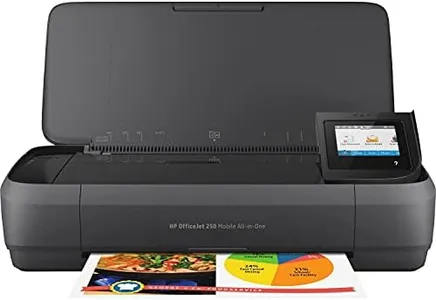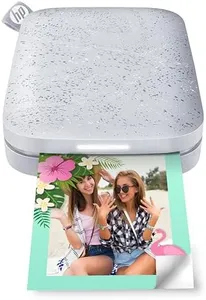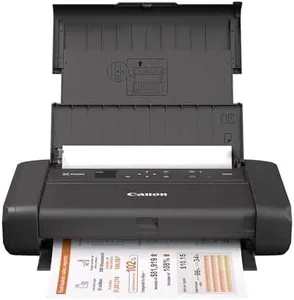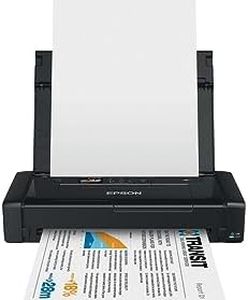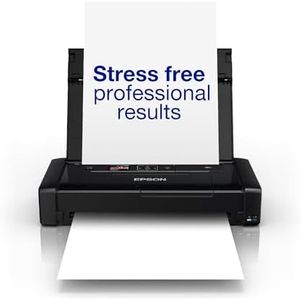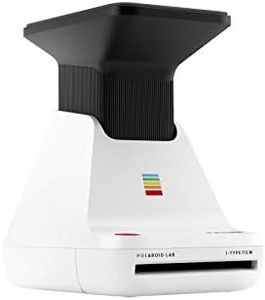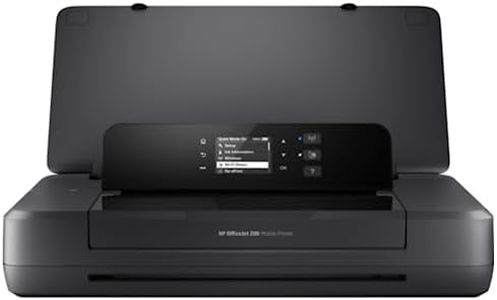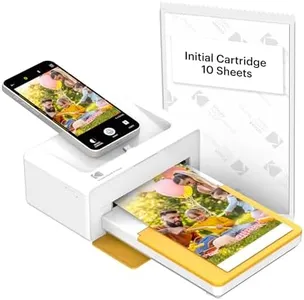We Use CookiesWe use cookies to enhance the security, performance,
functionality and for analytical and promotional activities. By continuing to browse this site you
are agreeing to our privacy policy
10 Best Portable Printers
From leading brands and best sellers available on the web.#1
Winner
Buying Guide for the Best Portable Printers
Portable printers are handy devices that let you print documents or photos wherever you are, without needing a full-size printer. They’re great for business travelers, students, or anyone who needs to quickly print things on the go. When choosing a portable printer, it’s important to find a balance between compactness, print quality, connectivity, and battery life. The goal is to match how you plan to use the printer with what each model offers, so you get the right features for your needs.Size and WeightSize and weight tell you how easy the printer will be to carry around. Lighter and smaller portable printers are easier to throw in a bag or backpack, but sometimes they come with some trade-offs in print speed or features. Larger models might give you a bit more functionality, but won’t be as convenient to transport. If you plan to travel a lot or carry the printer daily, go for the smallest and lightest model that still meets your other needs. If you’ll mostly move it between rooms or only travel occasionally, a bigger unit may not be an issue.
Printing TechnologyPortable printers use different printing technologies, mainly inkjet, thermal, or ZINK (Zero Ink). Inkjet printers usually produce higher quality color prints and are more versatile for different types of documents, but they need ink cartridges. Thermal printers use special paper, don’t need ink, and are often simpler and more reliable, but are usually limited to black-and-white printing. ZINK printers use special paper with embedded dye crystals and are mainly used for small, colorful photo prints. Choose inkjet for best all-around use, thermal for simple documents or labels, and ZINK if you’re mainly printing small photos.
Print Quality (Resolution)Print quality is measured in DPI, or dots per inch. Higher DPI means sharper, more detailed prints. For basic text documents, lower DPI (up to 600dpi) is fine, but if you plan to print high-quality color images, look for a higher DPI (1200dpi or greater). Think about what you’ll be printing most often – text, graphics, or photos – and let that guide your choice. If you mostly need text, you can prioritize other features over high resolution.
Battery Life and Power OptionsBattery life tells you how many pages you can print before needing to recharge. Some portable printers have built-in rechargeable batteries, while others require you to plug them in. If you expect to use your printer in places without easy access to power (like during travel or at outdoor events), a longer battery life or the option to swap in spare batteries is important. If you’ll use it mainly near a power outlet, battery life might not matter much.
ConnectivityConnectivity describes how the printer connects to your devices. Many portable printers offer Bluetooth or Wi-Fi for wireless printing from smartphones and laptops, while some may also have USB connections. Wireless options provide greatest flexibility, especially if you use various devices. Check for compatibility with your phone or computer operating system as well. If you plan to print mostly from a single device, wired options can be more reliable, but wireless is best for on-the-go, multi-device use.
Print SpeedPrint speed, measured in pages per minute (ppm), tells you how fast the printer can produce outputs. Slower printers might be fine for occasional use or printing single documents, while a faster printer is more efficient if you often need multiple copies quickly. Think about your patience level and how many pages you typically need at one time to decide what’s right for you.
Paper HandlingPaper handling refers to the kinds and sizes of paper the printer can use, and how many sheets it can hold at one time. Some portable printers only handle small photo paper, while others can print on standard letter-size or envelopes. If you plan to print different types of documents, check that the printer supports those sizes, and if it’s important to avoid frequent reloading, look for a higher paper capacity.



